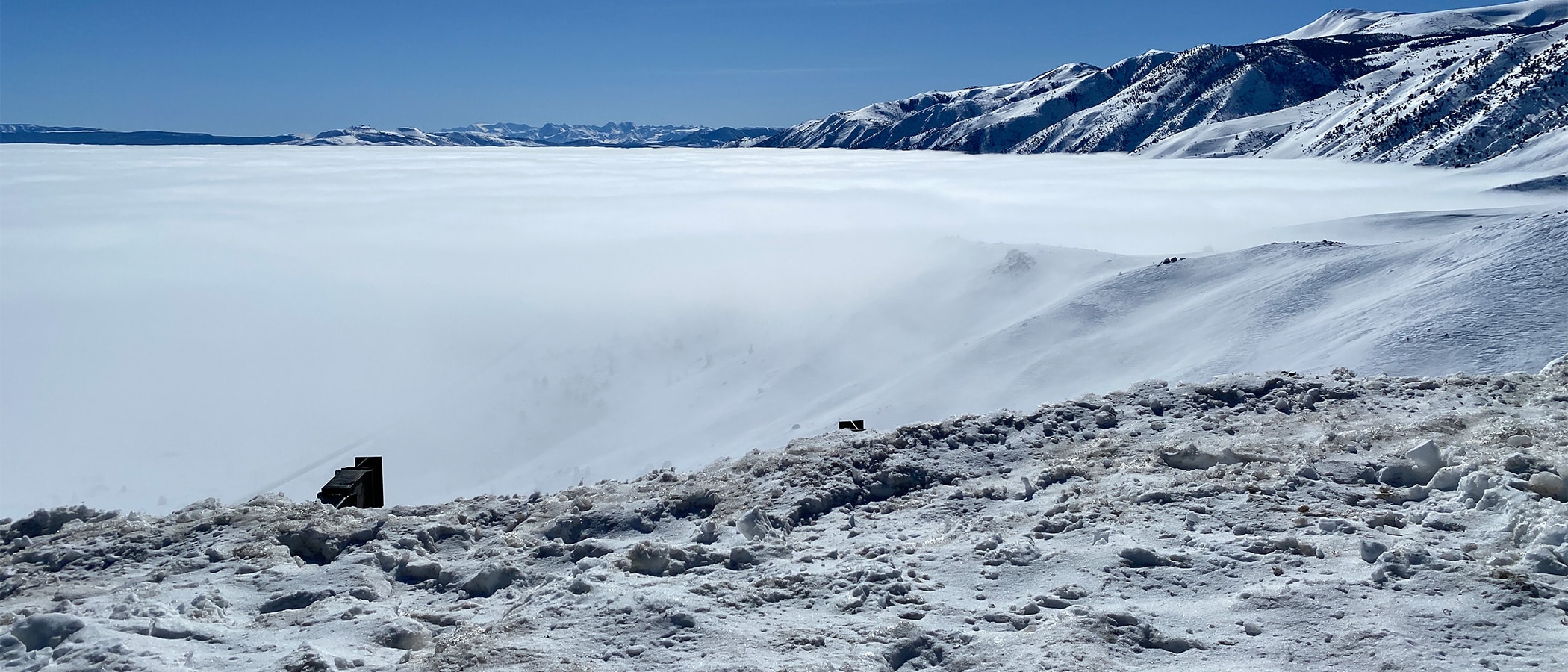
This winter has not only been notable for the incredible amounts of snow that have fallen, but also for the poconip fog. We’ve had more than 40 days of poconip fog since November 1, 2022, which is the record in recent memory for one winter!
Poconip fog usually happens during calm weather, when the ground is frozen or snow-covered, and when it’s sunny in most other parts of the Eastern Sierra. It forms in many Western basins, including at lakes like Crowley Lake, Bridgeport Reservoir, and Topaz Lake, but it occurs more regularly at Mono Lake. That’s likely because strong temperature inversions form here that trap sub-freezing evaporation off Mono Lake and evaporation continues all winter because Mono Lake doesn’t freeze due to its high salinity. It’s a perfect situation for fog to form.
The National Weather Service gave us and our notable poconip a nod yesterday: “Lastly, we can’t leave out this winter’s freezing fog and pogonip champions of Lee Vining and Mono Lake which is again today mired in stratus, fog, and cold temps under a strong inversion. Lee Vining at 19 [degrees Fahrenheit] while 2000 ft higher nearby it’s 40 [degrees Fahrenheit].”
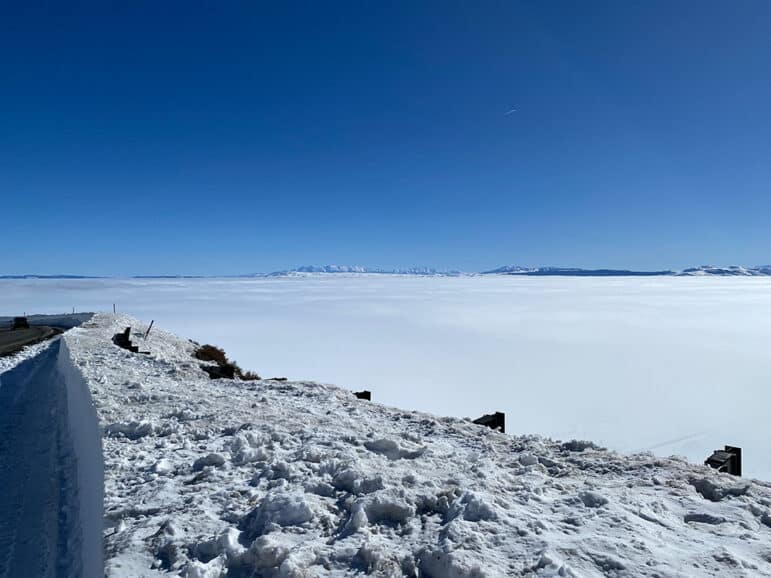
The name for the fog is a Paiute word; it is more commonly spelled “pogonip.” Starting with David Gaines, the Mono Lake Committee’s co-founder, we’ve spelled it “poconip.”
Underneath and within the poconip it is cold, dim, quiet, and beautiful. Sounds are muted and the air feels thick to breathe. Rime ice grows on every surface the poconip touches, coating everything with delicate ice crystals.
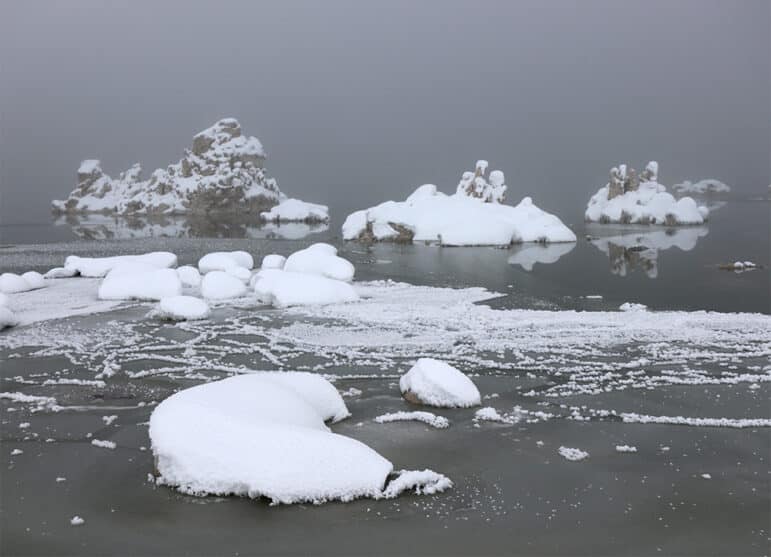
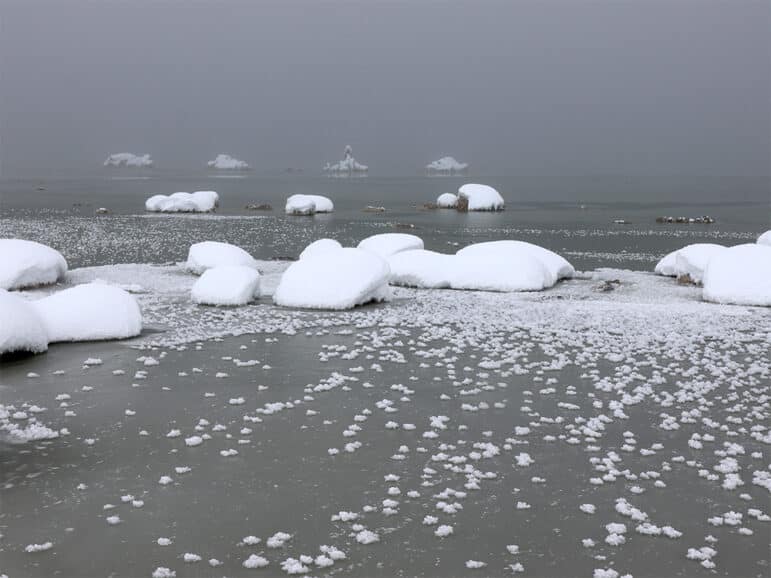
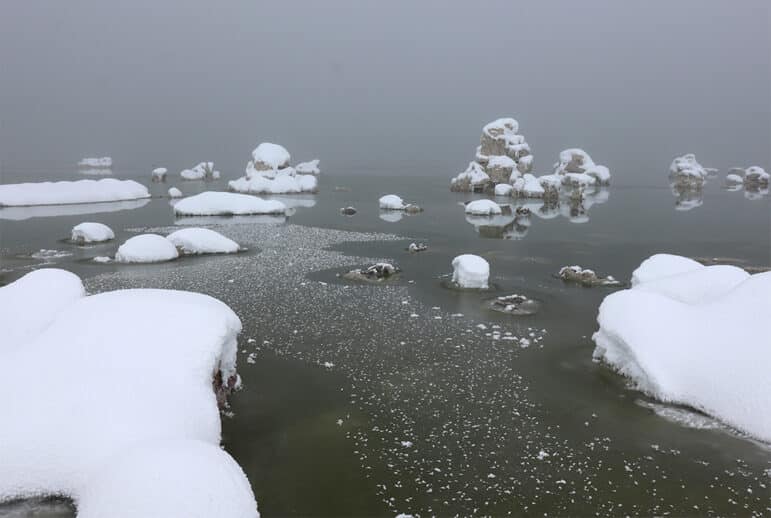
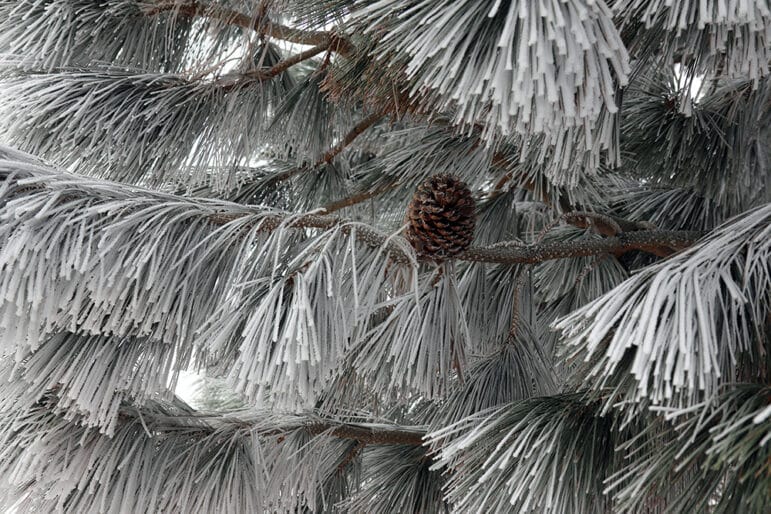
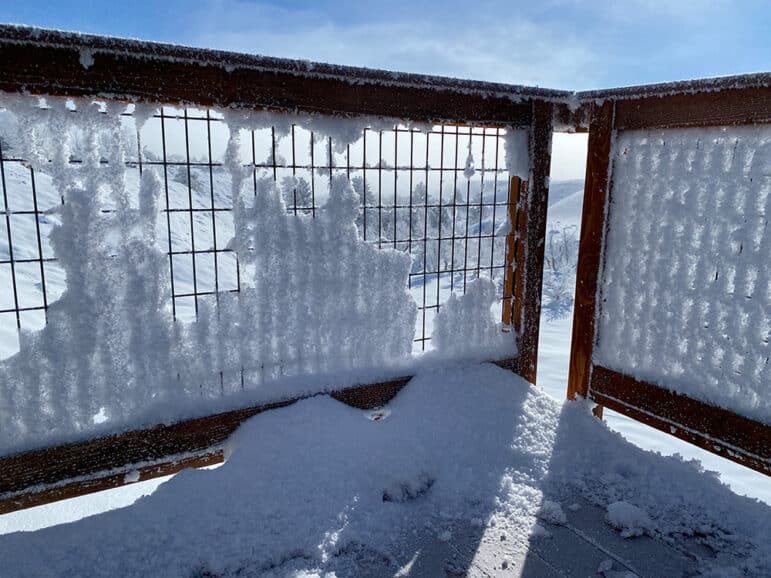
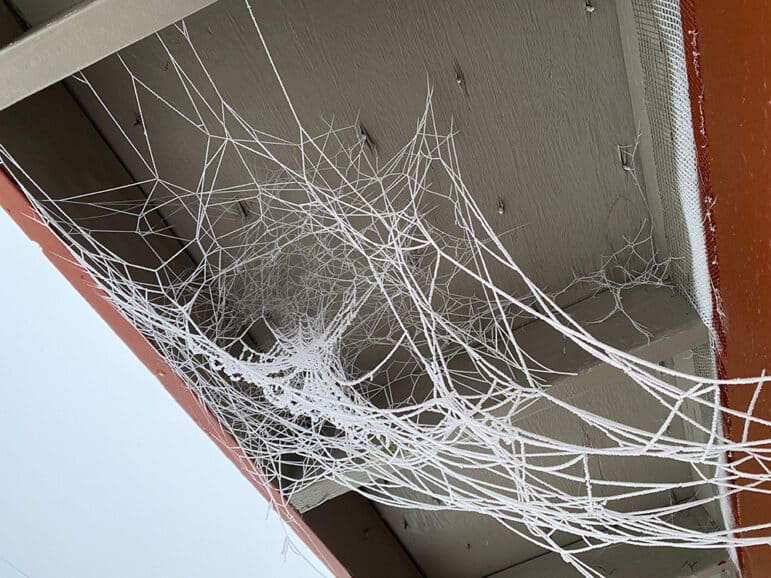
In Lee Vining and Mono City, the two communities nearest to Mono Lake, we watch the poconip ebb and flow as it swirls around, pushed by air currents especially when the temperature changes at dawn and when the sun sets behind the Sierra.
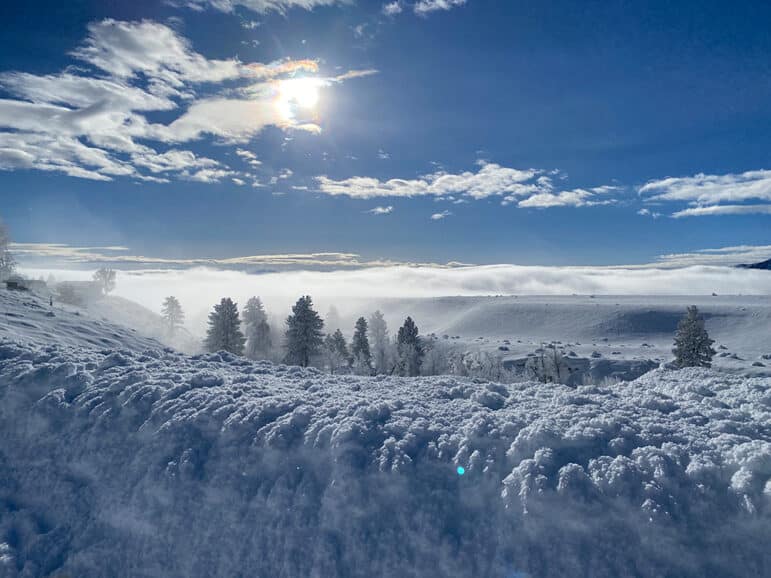
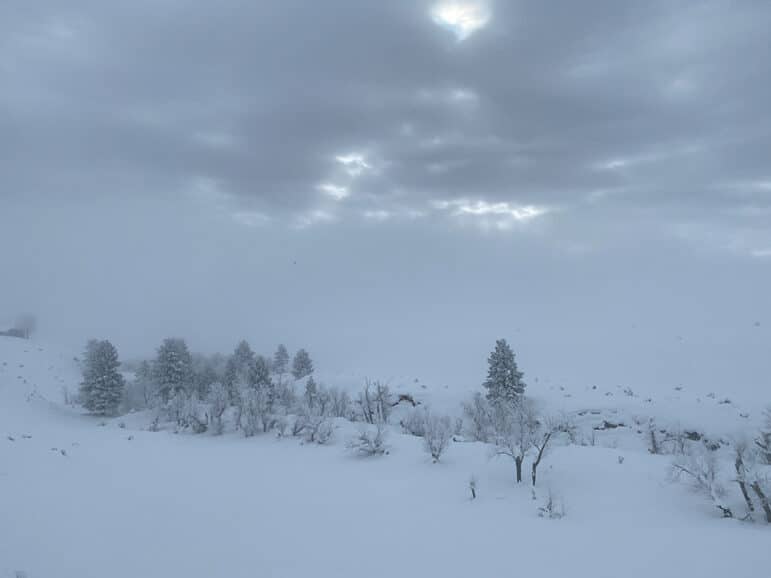
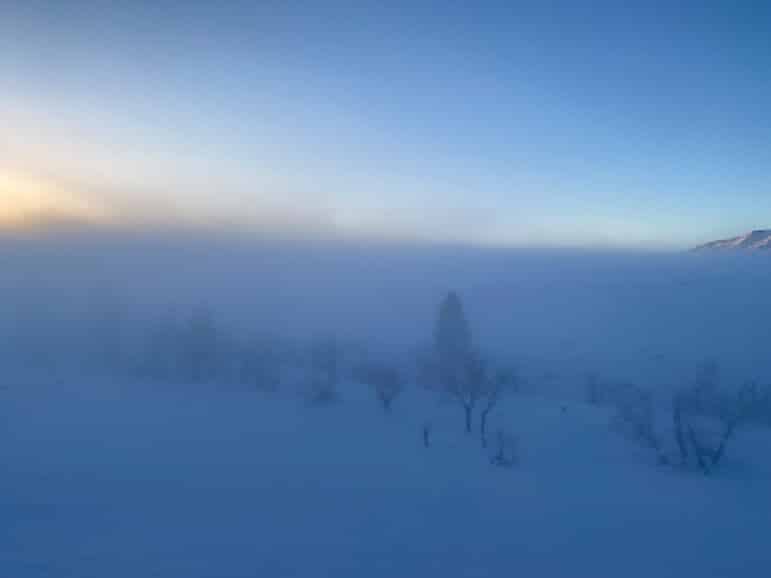
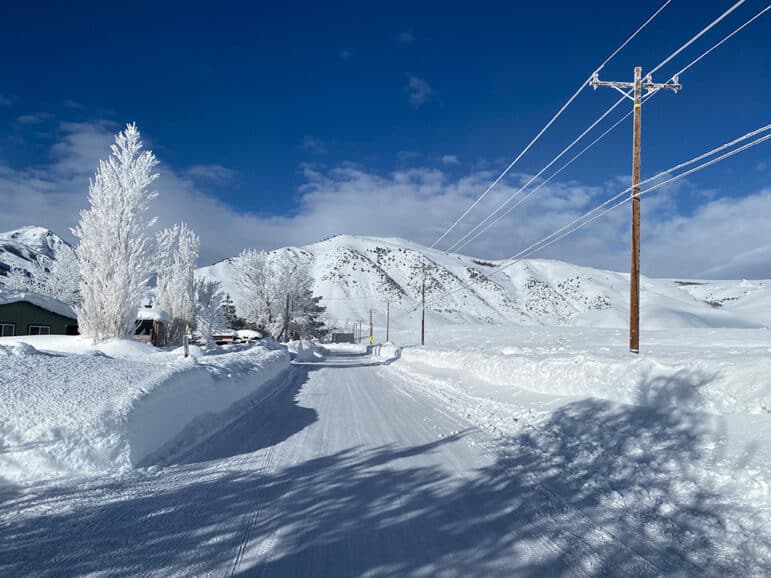
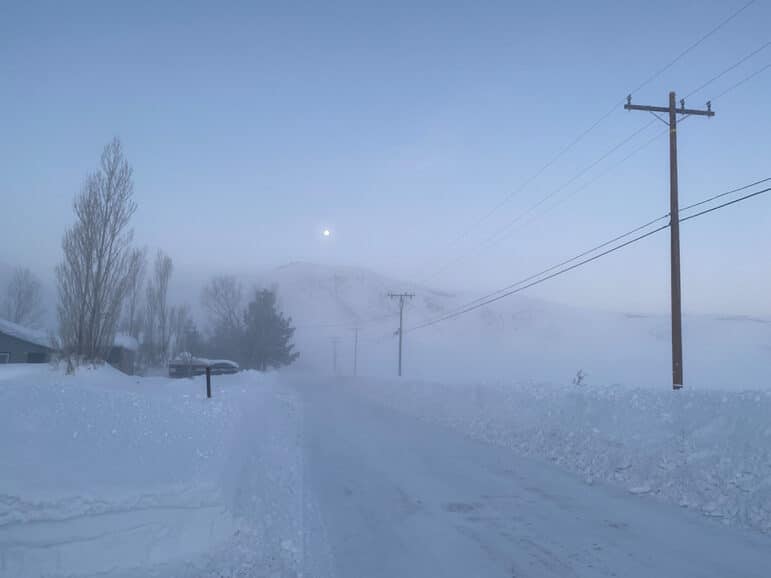
We’re used to plenty of bright sun during the winter here, so this foggy season has been a challenge. Neighbors who rely on solar panels have had trouble powering up. Without solar gain we’re running out of firewood for our woodstoves and experiencing high electric and propane bills. Our Board chair Sally Gaines remembers the poconip letting up in February as the days lengthen and the sun angle gets higher—I hope that happens soon!
My favorite poconip moment happens as the fog is burning off. The ice crystals that made up the fog start to fall out of the air—as you turn your face to the warm sun the air itself glitters and shimmers. It’s unbelievably beautiful.
For more about poconip fog you can revisit this photo essay post from 2013 or this winter album post from 2016. Have you seen the poconip this winter, either here in person or on the webcams as you plan your summer visit? I hope you get a chance to experience it one day.
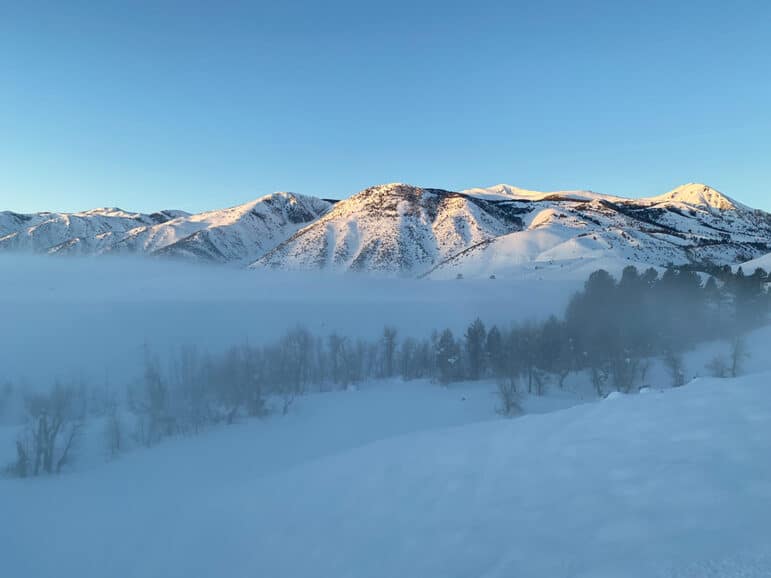
Top photo by Elin Ljung.
